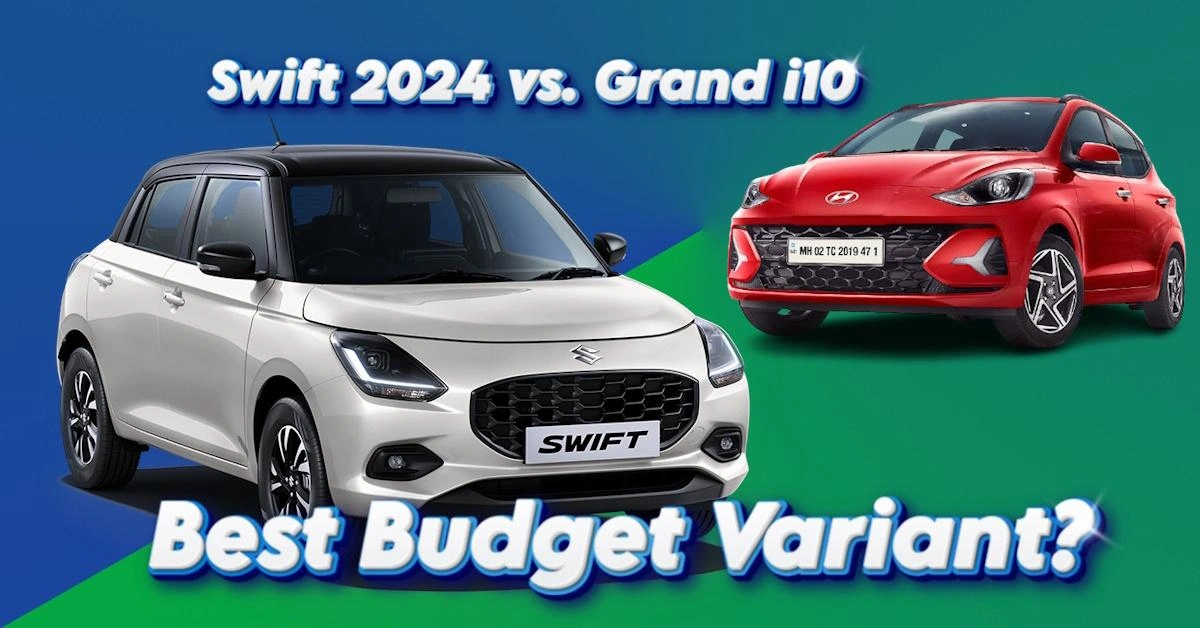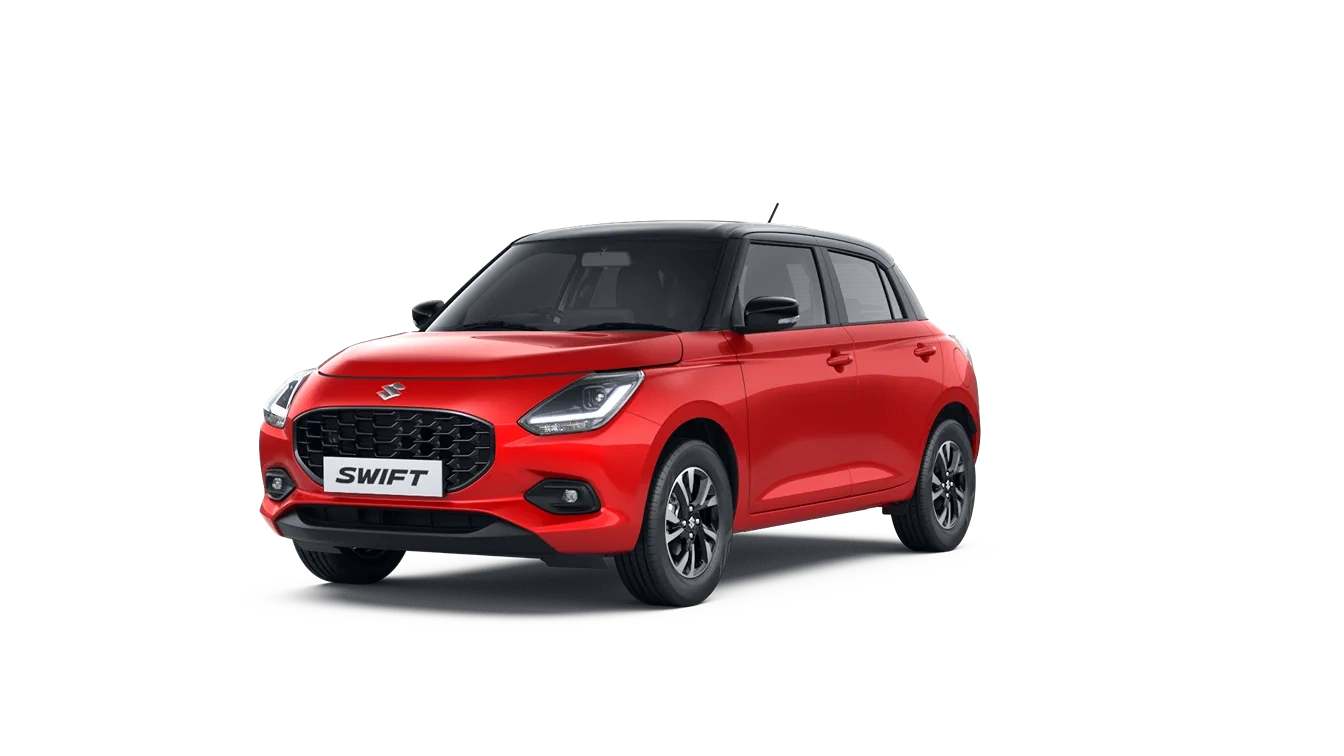Hyundai Grand i10 Nios vs Maruti Swift: Automatic Hatchback Battle (2024) | Budget Family Car Guide


In the realm of affordable luxury priced between Rs 6-8 lakh, the premium hatchback segment offers a fascinating duel between the Hyundai Grand i10 Nios Corporate AMT and the Maruti Suzuki Swift VXi AMT.
The Target Audience focuses on:
1. Spaciousness for daily commutes and occasional long drives
2. Fuel efficiency for budget management
3. Safety features for peace of mind
4. Overall comfort and practicality
5. Value for money with a touch of premium feel
6. Automatic transmission for ease of driving in urban conditions
1. Competitive Pricing: At Rs 757,900, it's more affordable than its competitor.
2. Modern Design: Features a contemporary exterior that appeals to style-conscious buyers.
3. Feature-Rich: Offers a good mix of convenience features even in the Corporate AMT variant.
4. Spacious Interior: Provides ample room for passengers, suitable for small families.
5. Brand Reputation: Hyundai's strong reputation for build quality and after-sales service (with a reported 95% customer satisfaction rate) provides peace of mind.
1. Fuel Efficiency: Boasts an impressive ARAI-rated mileage of 25.75 kmpl.
2. Attractive Design: Offers a sporty and dynamic exterior styling.
3. Driving Dynamics: Known for its sporty handling and engaging driving experience.
4. Brand Trust: Maruti Suzuki's extensive service network (with over 3,500 service centers nationwide) offers reliability and potentially lower maintenance costs.
Tap category headers to expand/collapse features
Let's dive into the numbers:
1. Price:
- Hyundai Grand i10 Nios Corporate AMT: Rs 757,900
- Maruti Suzuki Swift VXi AMT: Rs 779,500
- Price difference: Rs 21,600 (Grand i10 Nios is 2.8% cheaper)
2. Engine Performance:
- Grand i10 Nios: 81.80bhp, 113.8Nm
- Swift: 80.46bhp, 111.7Nm
- The Grand i10 Nios offers 1.7% more horsepower and 1.9% more torque
3. Fuel Efficiency:
- Grand i10 Nios: 16 kmpl
- Swift: 25.75 kmpl
- The Swift is 60.9% more fuel-efficient, which could result in significant savings over time.
4. Dimensions (in mm):
- Length: Swift 3860 vs Grand i10 Nios 3815
- Width: Swift 1735 vs Grand i10 Nios 1680
- Height: Both 1520
- Wheelbase: Both 2450
5. Boot Space:
- Grand i10 Nios: 260 liters
- Swift: 265 liters
- The Swift offers 1.9% more cargo capacity.
The Hyundai Grand i10 Nios Corporate AMT showcases a contemporary design philosophy. Its front is dominated by a large cascading grille, a signature element of recent Hyundai models. Sharp character lines along the body sides contribute to a modern aesthetic. The overall silhouette is sleek and aerodynamic, with a gently sloping roofline.
In contrast, the Maruti Suzuki Swift VXi AMT embraces a more aggressive styling approach. It features a distinctive front fascia with a hexagonal grille and sharp, angular headlamps. The Swift's profile is characterized by a floating roof design and strong shoulder line, creating a sporty appearance. LED daytime running lights add a premium touch to its exterior.
The Hyundai Grand i10 Nios boasts a well-crafted interior with a focus on simplicity and functionality. Its dashboard features a clean layout with high-quality materials, creating a modern and uncluttered appearance. The center console houses an infotainment system with easy-to-reach controls.
In contrast, the Maruti Suzuki Swift's interior showcases a more dynamic design. Its dashboard has a distinctive layered structure, complemented by a sporty flat-bottom steering wheel that adds to the car's athletic character. Both vehicles offer comfortable seating, but the Swift's slightly wider body provides additional interior space, particularly noticeable in terms of shoulder room for rear passengers.
Behind the wheel, both cars offer the convenience of AMT (Automated Manual Transmission) gearboxes. The Grand i10 Nios's 4-cylinder engine might purr a bit more smoothly, while the Swift's 3-cylinder unit could be more engaging.
The Swift's AMT has been noted for its smooth shifts, so even navigating through city traffic might feel quite satisfying in either car.
Both cars offer similar boot space, but the Swift's higher boot lip might make you think twice about packing that extra-large cooler. The Grand i10 Nios, with its ample storage spaces throughout the cabin, might just make light work of some of the packing.

Compare features, specs, and prices side by side.
1. Infotainment: The Swift VXi AMT offers a slightly larger 7-inch touchscreen compared to the Grand i10 Nios's 6.75-inch display. Both support Bluetooth connectivity, ensuring you stay connected on the go.
2. Safety: Both vehicles come equipped with 6 airbags, ABS, and EBD as standard, ensuring your precious cargo is well-protected.
3. Comfort Features: Both provide power windows, adjustable steering, and air conditioning. The Grand i10 Nios ups the ante with rear AC vents - perfect for keeping those backseat squabbles over temperature at bay.
4. Exterior Features: The Grand i10 Nios features LED DRLs, while the Swift VXi AMT offers halogen headlamps.


From a comfort viewpoint, the Hyundai Grand i10 Nios Corporate AMT emerges as the better choice. Its lower price point (2.8% cheaper) aligns well with budget-conscious families, while still offering a compelling balance of features, comfort, and style. Hyundai's reputation for quality (95% customer satisfaction) further solidifies its position as a sensible choice.
However, if fuel efficiency is a top priority, the Maruti Suzuki Swift VXi AMT makes a strong case for itself. Its superior mileage (60.9% more efficient) could lead to substantial long-term savings.